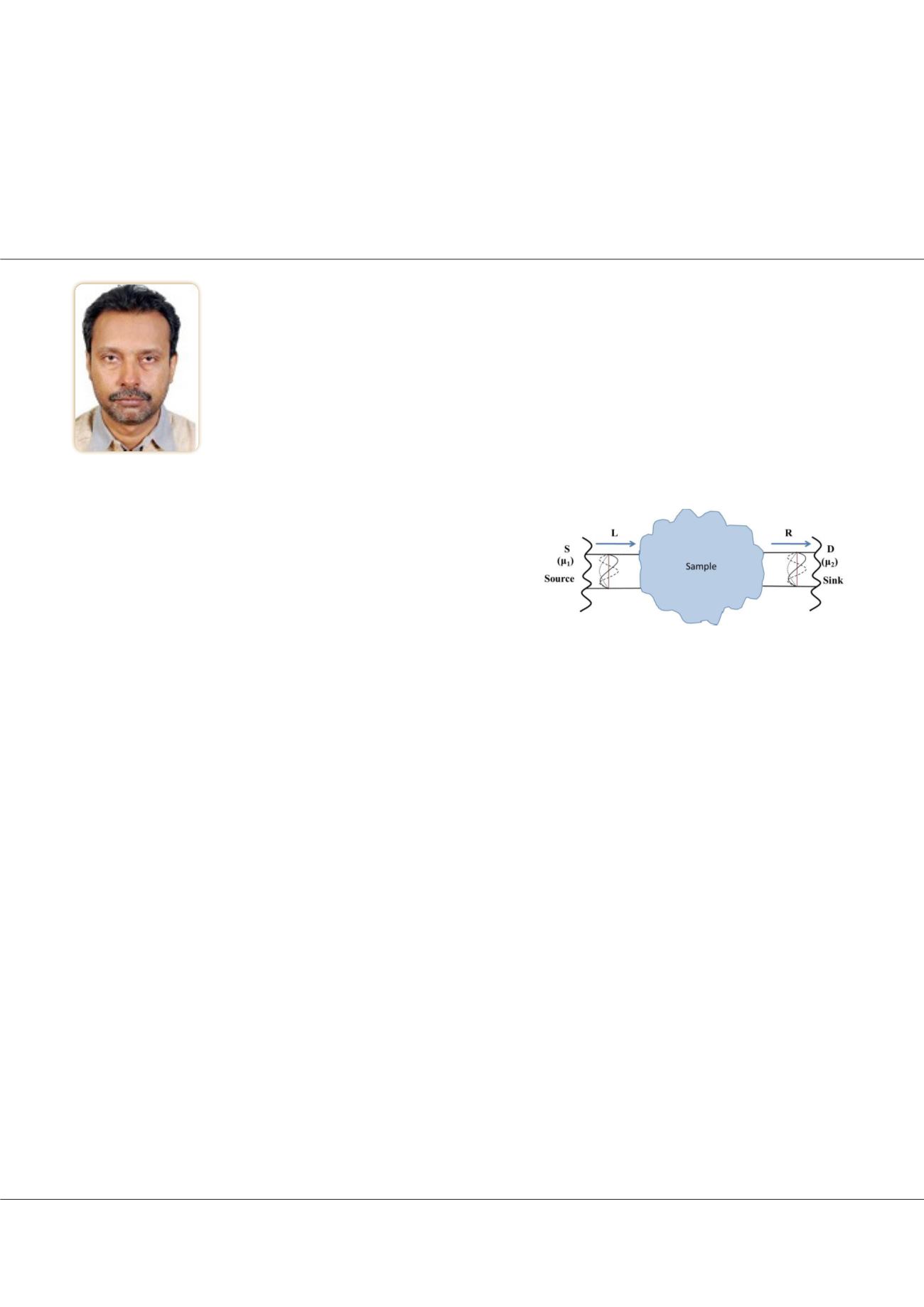

Quantum Physics, Optics and
Laser Technologies
Volume 5
Journal of Lasers, Optics & Photonics
Physicists Congress 2018
May 09-10, 2018
Page 25
conference
series
.com
May 09-10, 2018 Tokyo, Japan
International Conference on
Route to understand non-ergodic quantum systems
S
mall quantum systems are non-ergodic. Electrons transmitted through
a scatterer (region shaded blue) do not access all the states of the scatterer
and we do not have the liberty to take an ensemble average or average over
impurity configuration. In most transport measurements it is the partial
density of states (pdos) that play a relevant role while it is never possible
to know exact impurity configuration or the confinement potential that
determines it. The pdos also crucially depends on the positions and nature
of the leads (marked L and R) and so it is not enough to know the Hamiltonian of the system or the partition function, besides
the leads that determine the asymptotic states in the scattering process always have free electron states while many body effects
are inevitable inside the scatterer. How a free electron is transmitted through an interacting environment is a formidable
theoretical problem as it requires matching a one body wavefunction to a many body wavefunction. We prove that pdos can
be determined experimentally from the asymptotic free electron states at the resonances and sometimes it can be negative.
There can be large errors in the non-resonant regime but non-resonant pdos is so small in magnitude that they may be ignored.
Since our analysis is general, our results are valid for transmission through an interacting environment. From the pdos we can
determine all other relevant quantities that can be probed by an experiment and thus we provide a novel and new technique
to understand non-ergodic quantum systems. Negative pdos can also give rise to electron-electron attraction and also throws
some light on the nature of traversal times. We consider several typical scattering potentials to demonstrate our results. We
believe that our results can lead to the development on new technologies.
Recent Publications
1. Urbashi Satpathi, P Singha Deo (2016) Negative partial density of states in mesoscopic systems.
Annals of Physics
; 375: 491.
2. P Singha Deo (2007) Nondispersive backscattering in quantum wires.
Phys. Rev. B
; 75(23): 235330.
Biography
Prosenjit Singha Deo has completed his PhD in 1996 and has remained associated with research and teaching in Physics in premier institutions and universities
abroad and in India. He has published more than 50 papers in international journals. He is a Professor at S.N. Bose Centre, Kolkata since 1999 and successfully
guided several PhD theses. He has worked on various issues and problems in mesoscopic physics and correlated systems. Some of his current research topics
include quantum devices, quantum capacitance, bosonization in higher dimensions, quantum mechanical scattering phase shift in low dimensions, etc.
deo@bose.res.inProsenjit Singha Deo
S N Bose National Centre for Basic Sciences, India
Prosenjit Singha Deo, J Laser Opt Photonics 2018, Volume 5
DOI: 10.4172/2469-410X-C1-020
















